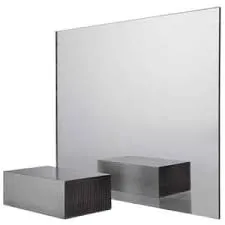

The Importance of 8mm Float Glass in Modern Architecture and Industry
In the ever-evolving world of architecture and manufacturing, materials play a pivotal role in determining the aesthetic and functional aspects of structures. Among the diverse materials available, 8mm float glass has gained considerable popularity due to its unique properties, versatility, and wide range of applications. This article will discuss the characteristics, advantages, applications, and future of 8mm float glass.
Understanding Float Glass
Float glass is produced through a process where molten glass is poured onto a bed of molten tin, allowing it to spread and form a flat surface. The term float derives from this process, which results in a smooth, clear, and uniform thickness. This method also eliminates the need for mechanical polishing, allowing for significant production efficiency. The standard thickness for float glass ranges from 2mm to over 25mm, and 8mm has emerged as a widely used thickness due to its balanced properties.
Characteristics of 8mm Float Glass
One of the standout features of 8mm float glass is its clarity. The manufacturing process ensures that impurities and distortions are minimized, resulting in excellent optical quality. This clarity makes it ideal for applications where visibility and aesthetics are critical, such as in storefronts, office buildings, and decorative elements.
In addition to its optical characteristics, 8mm float glass also offers substantial strength and durability. Its thickness strikes a balance between being lightweight and providing remarkable resistance to impact and weathering. This makes it suitable for a variety of environments, ranging from indoor use in commercial spaces to exterior applications like facades and glazing.
Advantages of 8mm Float Glass
One of the primary advantages of using 8mm float glass is its versatility
. It can be easily cut, shaped, and processed further through methods like tempering, laminating, and coating. This adaptability allows architects and designers to incorporate it into a range of designs and architectural concepts.
Furthermore, 8mm float glass can enhance energy efficiency when combined with low-emissivity (Low-E) coatings or insulating glass units. These treatments minimize heat loss or gain, contributing to a building's thermal performance and energy efficiency. As sustainability becomes increasingly significant in modern design, the use of energy-efficient materials like 8mm float glass will likely continue to rise.
Another important benefit is the ease of maintenance associated with float glass. Its smooth surface is less prone to trapping dust and grime compared to other materials, making it simpler to keep clean. This aspect is particularly beneficial in high-traffic areas where aesthetic presentation is crucial.
Applications of 8mm Float Glass
The applications of 8mm float glass are extensive. In the construction sector, it is commonly used for windows, glass facades, curtain walls, and glass doors. Its transparent nature can enhance natural lighting within spaces while offering a modern and sleek appearance.
In the interior design realm, 8mm float glass can be utilized for partitions, railings, shelves, and tabletops. Designers appreciate its capability to create open and airy spaces while providing a touch of elegance. In commercial settings, it is often employed in the manufacturing of display cases and office cubicles, which promote visibility and interaction while offering an upscale look.
Moreover, the automotive industry has also found ways to incorporate float glass in vehicle manufacturing due to its favorable properties. Windscreens and windows made from this type of glass provide a blend of safety, visibility, and structural integrity.
The Future of 8mm Float Glass
As technology advances, the future of 8mm float glass looks promising. Innovations in smart glass technology, including self-tinting and electrochromic glass, may further expand the functionalities of float glass in buildings and vehicles. These advances not only promise improved comfort and energy efficiency but also additional layers of design potential.
In conclusion, 8mm float glass is a significant contributor to modern architecture and industrial design. Its combination of clarity, strength, and versatility makes it an invaluable material for a multitude of applications. As we continue to explore new technologies and sustainable practices in building and design, the role of 8mm float glass is expected to grow, shaping the future of our built environment.